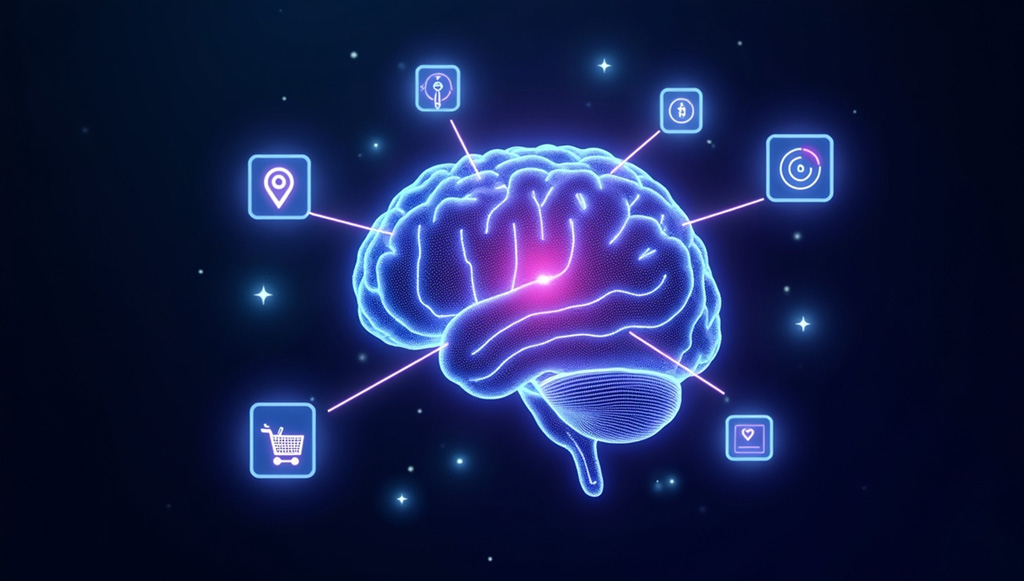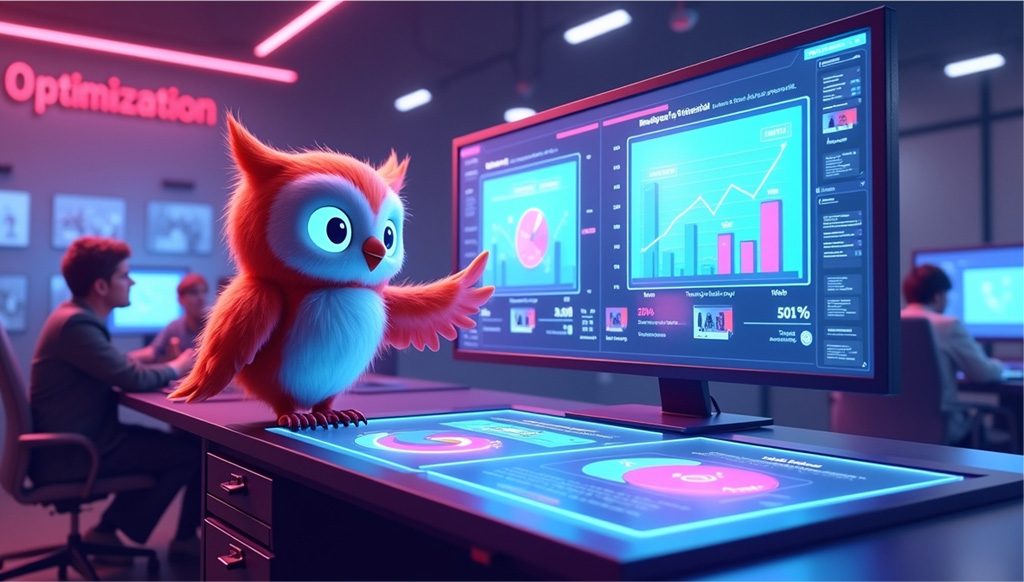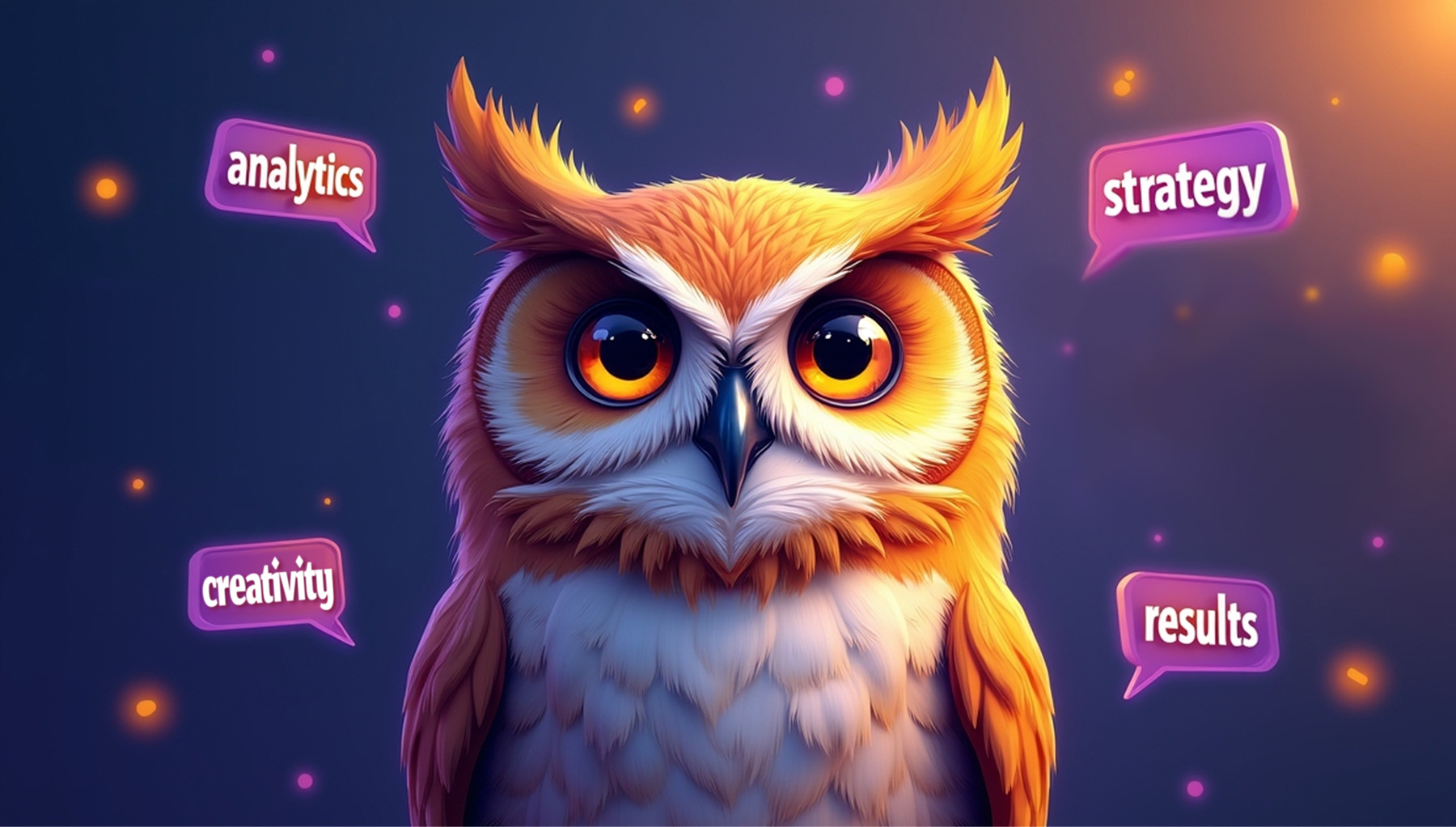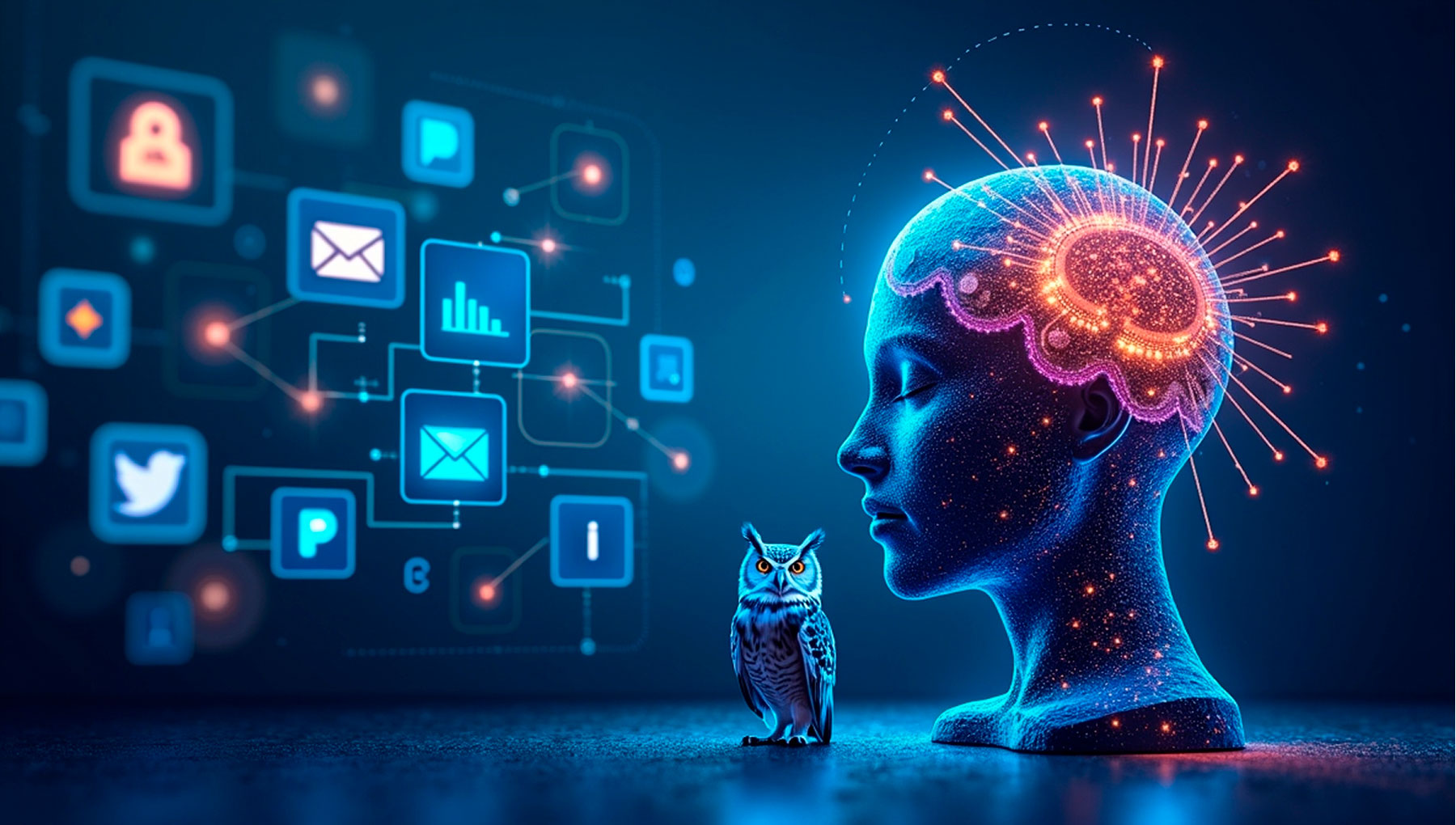Artificial intelligence is reshaping the foundations of digital marketing. With its capacity to analyse vast amounts of information and draw meaningful conclusions at speed, AI in marketing automation enables businesses to craft highly targeted strategies that evolve with each customer interaction. Rather than relying solely on traditional segmentation, companies now deploy intelligent systems that adapt in real time, responding to dynamic user behaviours across platforms.
These changes are not limited to tech giants. Retailers, financial services, and even SMEs are leveraging AI to reduce waste, enhance customer relationships, and increase revenue. According to a report by Statista, over 80% of industry leaders are now using some form of AI-driven automation in their marketing stacks. This wide adoption underscores the technology’s growing role in shaping the future of engagement and acquisition.
Global brands such as Unilever and Nike have invested heavily in marketing technologies. Unilever uses machine learning algorithms to process consumer insights from social media, identifying product opportunities in local markets. Nike, meanwhile, applies AI to personalise its app experience based on individual preferences, order history, and real-time engagement. These applications demonstrate how businesses are combining innovation with practicality to stay ahead.
What is marketing automation?
Marketing automation encompasses technologies and platforms that streamline repetitive tasks like sending emails, scheduling social posts, managing customer journeys, and measuring campaign performance. The goal is to free up time for strategy and creativity while maintaining consistent and data-informed outreach. Traditional automation relies on pre-set rules—if a customer performs X, then trigger Y.

Marketing automation with AI, however, elevates this process by introducing adaptability and intelligence. Instead of depending on static rules, AI learns from ongoing interactions. This allows systems to refine outreach strategies automatically. For instance, if a user starts engaging more with video content, an AI-powered automation tool can shift from sending blog posts to recommending videos in future emails.
Platforms like ActiveCampaign and Oracle Eloqua integrate AI to score leads, predict purchasing behaviour, and generate optimal timing for outreach. By examining historical interaction data and combining it with real-time events, these systems offer personalised experiences that convert better and waste fewer resources.
Importantly, this shift benefits not just marketers but customers as well. Audiences receive fewer irrelevant messages, enjoy faster response times, and experience communication that aligns with their unique interests. As a result, trust in the brand grows organically, and loyalty follows.
From an operational perspective, marketing automation reduces manual workload significantly. According to Salesforce, marketers using automation report a 30% increase in campaign productivity. With AI playing an increasingly central role, these results are expected to improve even further.
How AI is transforming CDPs
Customer Data Platforms (CDPs) have emerged as vital infrastructure for any business seeking to unify and understand its customer base. They collect, clean, and store data from disparate sources, such as website behaviour, mobile apps, point-of-sale systems, CRM tools, and third-party platforms. A fully integrated CDP enables a 360-degree view of each customer.
The incorporation of ai automation marketing supercharges this system. AI doesn’t just aggregate information—it interprets it. By identifying patterns, predicting actions, and segmenting audiences automatically, AI makes the data within a CDP far more actionable.
A real-world example is the airline industry. Lufthansa uses an AI-powered CDP to monitor traveller behaviour, such as frequently visited destinations or preferred departure times. Based on this analysis, the system delivers targeted email campaigns offering discounts on relevant routes, increasing conversion rates and enhancing customer satisfaction.
AI also enables predictive segmentation within CDPs. Rather than grouping individuals based on demographics alone, machine learning considers hundreds of behavioural and contextual signals. For example, a user who consistently abandons a shopping cart may be classified differently from one who only visits high-ticket product pages. These insights help marketers design distinct workflows for each scenario, improving the likelihood of conversion.

Natural language processing (NLP) further enriches CDPs. Brands can analyse customer reviews, chat logs, and social media comments to identify pain points, preferences, and sentiment trends. These insights can guide both marketing strategy and product development.
Moreover, real-time processing means these updates occur as customers interact with the brand. If someone watches a product demo video, AI can instantly shift their score, assign them to a new segment, and trigger a tailored follow-up campaign. This level of responsiveness turns static data into living profiles that evolve with every click, scroll, and swipe.
Examples of AI in marketing automation
AI has unlocked a new level of intelligence in modern marketing systems. One of the most impactful developments is the fusion of marketing automation and AI, which enables businesses to move beyond simple rule-based actions into predictive, adaptive, and highly efficient engagement strategies.
This integration allows companies to not only automate repetitive tasks but also personalise communication, score leads intelligently, and optimise campaign performance based on real-time data. It’s no longer just about scheduling emails or triggering ads—it’s about delivering meaningful customer experiences powered by learning algorithms.
Let’s explore the most prominent use cases that showcase how marketing automation and AI are reshaping the future of digital engagement, driving measurable results and long-term value.
Predictive analytics & customer segmentation
Predictive analytics leverages historical and real-time data to forecast future behaviours. With AI at its core, predictive models help businesses understand which customers are most likely to churn, convert, or engage further. These predictions allow marketers to prioritise high-value leads and allocate budgets more efficiently.
Netflix is a widely cited example of predictive personalisation. Its recommendation system considers dozens of behavioural factors, including watch history, content completion rate, and even time-of-day activity. The result is a custom interface for each user, leading to higher engagement and longer retention.
For marketers, predictive analytics provides a competitive advantage. E-commerce platforms like Shopify use AI to suggest future purchases based on past buying patterns. These suggestions can be delivered via email, mobile push notifications, or within the app. The improved timing and accuracy of these recommendations create a seamless experience that encourages ongoing engagement.
This also strengthens customer segmentation. Instead of broad categories like age or location, AI enables segmentation based on behaviour patterns, sentiment, and even content consumption frequency. These micro-segments allow marketers to develop tailored strategies that feel genuinely relevant.
Ethical considerations and transparency
While AI offers exceptional capabilities, its use also introduces significant ethical considerations. As automated systems take over decision-making, brands must ensure that their processes are transparent and free from bias. This includes explaining how decisions are made and giving users control over their data.

One notable concern is algorithmic bias. If AI is trained on biased or incomplete datasets, it may produce unfair outcomes. For instance, if an algorithm gives certain leads consistently lower scores based on non-representative behaviour models, opportunities may be lost unjustly. To prevent this, companies like IBM offer open-source tools to audit AI systems for fairness and explainability.
Transparency is equally important in customer communication. When personalised messages are generated using behavioural tracking, users should understand how and why they are being targeted. This fosters trust and aligns with data protection regulations such as GDPR and CCPA.
Marketers must also strike a balance between automation and human touch. Over-automated interactions can feel robotic or intrusive. Ethical use of AI means maintaining empathy, respecting user intent, and ensuring clear opt-out options. Ultimately, ethical practices not only safeguard user rights—they enhance brand credibility.
Lead scoring & enhanced sales automation
Lead scoring is a fundamental marketing function, helping teams prioritise who to contact and when. Traditional scoring models assign values based on static criteria: page visits, form submissions, or opened emails. AI revolutionises this by continuously learning from new data and adjusting scores in real time.
Salesforce Einstein, for example, processes past interactions, demographic data, and CRM activity to provide predictive lead scores. These scores help sales teams determine which prospects are ready to convert and which require further nurturing. The system also suggests the best outreach method and timing, improving the efficiency of follow-ups.
Another effective tool is Zoho’s Zia, which automates lead assignment and follow-up sequences. Based on each lead’s engagement patterns, Zia prioritises them and triggers relevant campaigns. This prevents leads from slipping through the cracks and ensures consistent touchpoints.
AI-driven scoring doesn’t just streamline sales—it boosts alignment between marketing and sales departments. Shared insights and real-time visibility make it easier for teams to collaborate, deliver value, and accelerate pipeline growth.
Hyper-personalised content & recommendations
Today’s consumers expect tailored experiences. Generic messages are quickly ignored, while personalised communication earns attention. AI enables businesses to create and deliver dynamic content that reflects the unique interests and behaviours of each user.
Take Amazon’s recommendation engine: it drives 35% of the company’s revenue. It does this by analysing purchase history, browsing habits, search queries, and even cart additions to generate recommendations across channels—on-site, email, and mobile.

AI can also generate unique subject lines and message bodies using natural language generation (NLG). Tools like Jasper and Phrasee analyse previous engagement results and A/B test messaging variations to determine which phrases drive the best outcomes.
A fashion brand, for instance, can automatically adjust product display order based on each user’s preferences. Someone who frequently buys summer wear might see beach outfits first, while another who shops winter apparel will see jackets and boots instead. This approach increases both relevance and revenue.
Visual recognition for social and ecommerce
Visual recognition technologies powered by AI have significantly enhanced marketing for social commerce and ecommerce. These solutions interpret visual inputs—images, videos, or live streams—to trigger automated actions or recommendations.
Pinterest Lens is a leading example. Users upload a photo of an item they like, and the system suggests visually similar products available online. Fashion retailers like ASOS and Zara use similar tools to recommend matching accessories or suggest full outfit combinations based on uploaded photos.
Brands also benefit from image-based sentiment analysis. Platforms like Brandwatch apply AI to detect logos in social media images and classify associated sentiment. This helps companies monitor their presence across channels and measure brand perception beyond written reviews.
Visual search makes discovery intuitive and fast. Instead of typing in keywords, users can take a photo of what they want. This frictionless experience reduces bounce rates and increases conversions—especially in mobile commerce environments.
Improved campaign optimisation & performance measurement
Effective marketing doesn’t stop at execution—it thrives on constant optimisation. AI helps refine strategies by analysing performance indicators and recommending data-driven changes. This includes everything from creative variation testing to channel selection and budget allocation.
Google Ads’ Performance Max campaigns are a prime example of this capability. AI continuously monitors campaign performance across all Google properties, adjusting bids and placements to maximise conversions. These changes happen in real time, ensuring resources are used efficiently.
Meta’s Advantage+ campaigns work similarly, automatically testing combinations of visuals, headlines, and calls-to-action. The system prioritises the creatives that perform best with each audience segment, improving return on ad spend.
Marketers gain deeper insights from AI-powered dashboards, which track micro-metrics like engagement drop-off, ideal time-to-send for emails, and channel attribution. Tools like Tableau and Looker integrate AI to identify anomalies, forecast trends, and provide proactive recommendations.
Chatbots & conversational AI

Conversational AI, including chatbots and virtual assistants, has become a cornerstone of modern customer service. These systems handle queries, suggest products, resolve complaints, and even upsell—all without human intervention.
Retailers like H&M have deployed chatbots on platforms like WhatsApp and Messenger. These bots guide users through catalogues, answer sizing questions, and recommend items based on preferences. This reduces customer wait time and enhances the shopping experience.
Drift and Intercom offer more advanced conversational platforms that qualify leads, book appointments, and integrate with CRM systems. Their AI models recognise intent and escalate complex issues to human agents when necessary. This hybrid approach ensures customers always get the right level of support.
In B2B settings, conversational AI helps marketers capture lead information during out-of-office hours, keeping pipelines active 24/7. These tools reduce friction in the buyer journey, creating smoother transitions from interest to purchase.
Use MarketOwl to supercharge your marketing activities
For businesses aiming to combine intelligent workflows with scalable efficiency, MarketOwl delivers a powerful and adaptive platform that blends automation, insights, and cross-channel delivery. It allows teams to unify their strategy, execution, and optimisation processes using intelligent systems that adapt to customer behaviour in real time.
Whether you’re orchestrating multi-step campaigns, launching personalised email sequences, or scoring inbound leads, MarketOwl provides a centralised solution with advanced AI capabilities. It supports omnichannel delivery—across email, web, push notifications, and social platforms—ensuring consistent, tailored messaging at scale.
A key feature is MarketOwl’s predictive engine, which analyses behavioural patterns to recommend content, assign lead values, and suggest budget allocations across channels. These recommendations evolve constantly as more data is collected, helping teams stay agile and outcome-focused.

Additionally, MarketOwl simplifies testing and optimisation. With built-in A/B testing, automated creative evaluation, and actionable performance dashboards, teams can enhance performance without manual guesswork. Marketers gain insights into what resonates with their audience and can adjust in real time to improve engagement.
By unifying intelligent automation and strategic execution, MarketOwl empowers organisations to deliver more personalised, efficient, and results-driven marketing—regardless of size or industry.
Effective AI tools
AI post generator for Instagram
Transform your Instagram with our AI manager: create eye-catching images, captions and schedule posts at the optimal time for maximum impact!
AI Ads Manager
AI UA Performance Manager is a game changer in online advertising. It generates a variety of advertising creatives and texts, launches campaigns in Meta and Google, and continuously optimises them for maximum effectiveness within your budget.
AI email generator
Get rid of stress and create any type of email with ease in seconds with MarketOwl!
Сreate a brand logo using AI
Use artificial intelligence to create a suitable and creative logo for your purposes!



